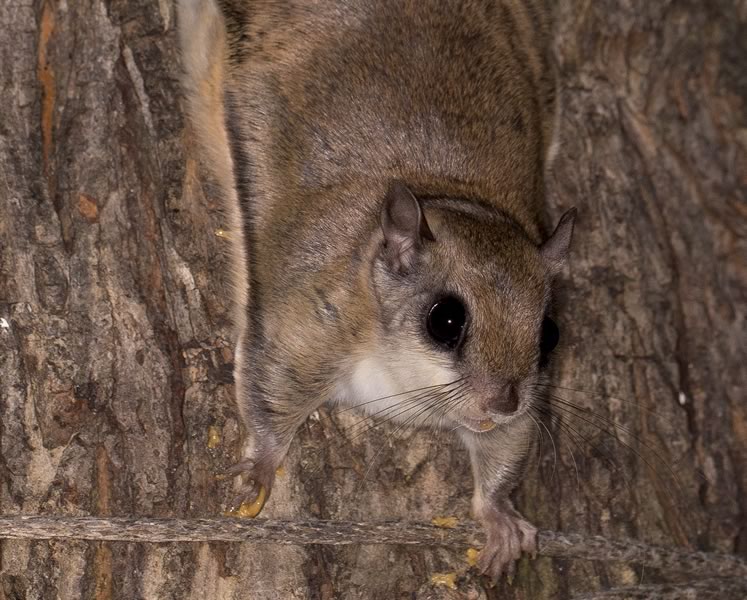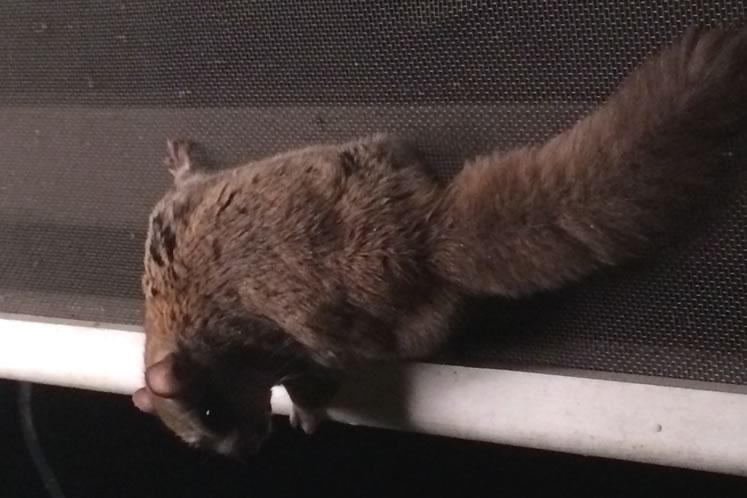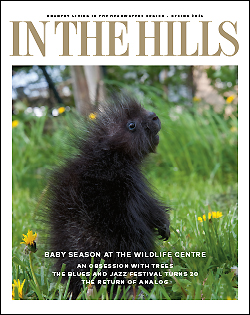Flying Squirrels
Remarkably, flying squirrels can glide up to 90 metres, though most of their aerial journeys are much shorter.
The large round eyes of flying squirrels, essential for their nocturnal lifestyle, grace them with cuteness factor that is off the charts.
Populations of these beguiling rodents are thought to approximate those of red squirrels, their common diurnal relatives. But because they only come out at night, flying squirrels are seldom seen.

Southern flying squirrel. Photo by Fiona Reid.
That is, unless you have a bird feeder and live in, or near, the woods like Kim van Oosterom, In The Hills art director. The video below was taken at her home in Mulmur.
Kim reports that this flying squirrel has divined how to open her “squirrel-proof” feeder to pilfer seed. “The feeder is one of those squirrel busters with a weight-sensitive ring. The red squirrels can’t figure it out (that’s the point!), but the flying squirrel knows to bounce the ring and grab seeds on the upswing.”
Flying squirrels don’t actually “fly”. They do glide superbly, however, by spreading furry membranes between their legs to achieve lift. By tweaking the angle of these parachute-like membranes they can twist and turn through their forest habitats.
Remarkably, they can glide up to 90 metres, though most of their aerial journeys are much shorter.
A recent discovery found that flying squirrels fluoresce pink under ultraviolet light. This suggests that flying squirrels can use their soulful black eyes to see in the ultraviolet. If so, they may be able to watch flickering pink trajectories of their fellow squirrels as they glide between trees in the dark. This would be useful to track rivals and potential mates.

Northern flying squirrel. Photo by Kim van Oosterom.
Perhaps flying squirrels also use ultraviolet vision to find food. Many species of fungi glow in the UV and flying squirrels eat a lot of mushrooms.
So, there you have it. Flying squirrels: brainy rodents, masterful gliders, and, of course, pretty… in pink.






